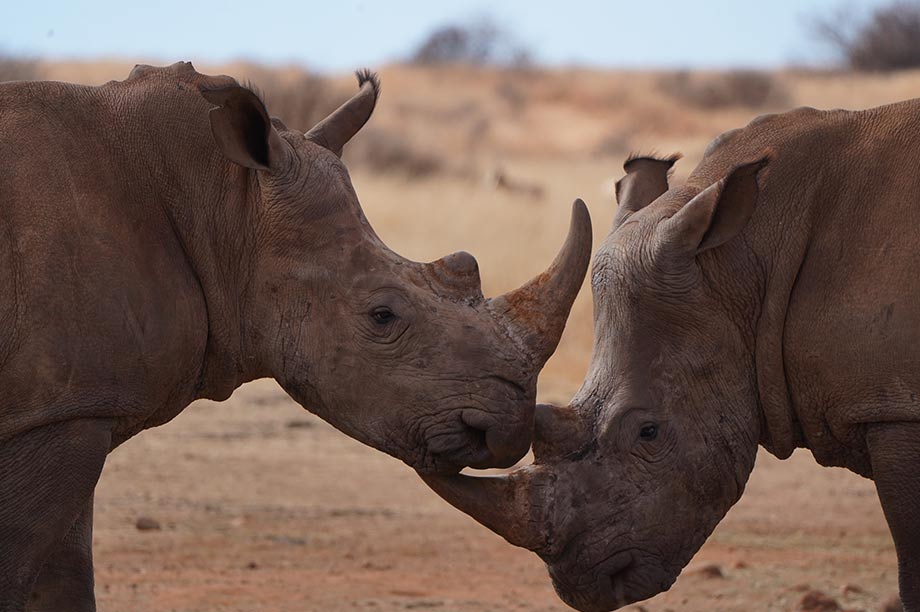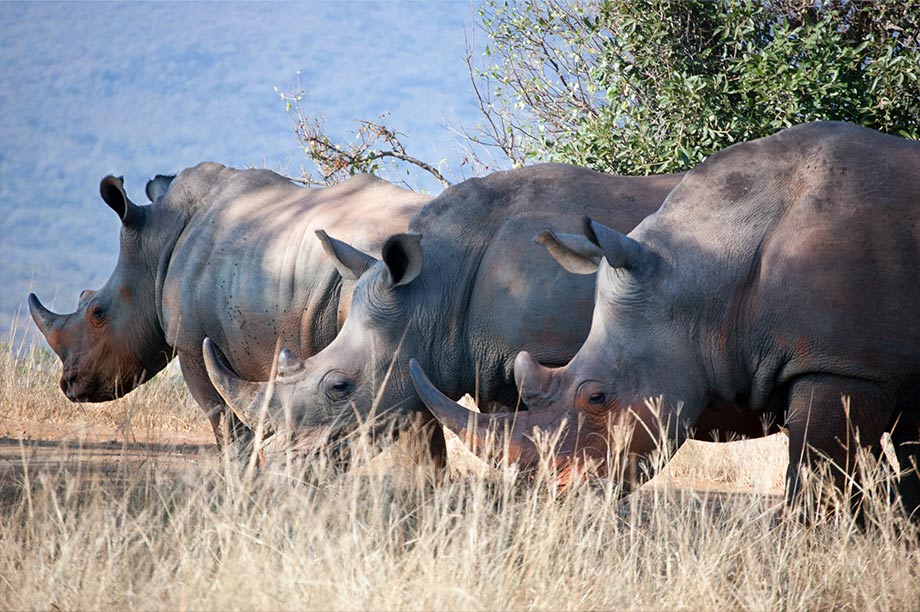General
World Rhino Day 2021
22 Sep 2021
Share this article
World Rhino Day is celebrated every year on September 22 and is a day to help raise awareness of what we can do to protect the population of the Rhino species. As our namesake, and as proud Rhino lovers, we want to shine the spotlight on these majestic and strong creatures. Read on to learn five interesting facts about Rhinos, plus how we can help spread awareness of #WorldRhinoDay and #KeepTheFiveAlive.
- There are five Rhino species surviving today – Black, White, Greater One-Horned (or Indian), Javan and Sumatran. The Black and White Rhinos can be found in Africa; while the Greater One-Horned, Javan and Sumatran Rhinos can be found in Asia.
- The name ‘Rhinoceros’ means nose horn and is a combination of two Greek words – Rhino (nose) and ceros (horn). The Greater One-Horned and Javan Rhinos have one horn, while the White, Black, and Sumatran Rhinos have two horns.
- Rhinos are one of the largest land animals in the world, second to the elephant. The White Rhino can grow up to 1.8 metres tall and weigh up to 2,500kgs.
- Despite their weight, Rhinos are herbivores and spend most of their days eating grass, plants and bushes. Black Rhinos prefer bushes and trees, while White Rhinos prefer grazing on grass.
- Rhinos don’t have natural predators due to their tough horns and thick, armour-like skin. However, they’re easily frightened and will charge at whatever scares them.


Although Rhinos have no natural predators and are gentle, giant creatures, sadly, they are critically endangered species. There are less than 30,000 Rhinos estimated to be living in the wild today. A terrifying change from the 500,000 Rhino population at the start of the 20th century. Here are the population numbers from WWF for each species:
- The Javan and Sumatran Rhinos are critically endangered with less than 70 Javan Rhinos left and less than 100 Sumatran Rhinos.
- The Greater One-Horned Rhino is listed as vulnerable with a population of around 3,500.
- Black Rhinos are critically endangered with only 5,000 Rhinos remaining.
- White Rhinos are near threatened with around 20,000 left.
The main threat that Rhinos face today is due to poaching and the illegal trade of Rhino horns. Although international trade of Rhino horns has been banned since 1977, the black market still sees a high demand for Rhino horns in Asian countries. The other big threat to the Rhino population is the loss of natural habitat as more and more land is cleared for farmland, buildings and other structural developments.


Just like elephants, Rhinos are known as an ‘umbrella’ species and play an important role in their ecosystem. By protecting them you are also protecting many other species – flora and fauna – that share the same habitat.
There are many ways you can help safeguard the future of Rhinos including adopting a Rhino, donating to Rhino conservation programs, or just talking to your friends and family about Rhinos!
For more information or ways you can help, visit:
International Rhino Foundation - https://rhinos.org/
Save The Rhino - https://www.savetherhino.org/
Helping Rhinos - https://www.helpingrhinos.org/
Wildlife Warriors - https://wildlifewarriors.org.au/conservation-projects/black-rhinoceros-/





